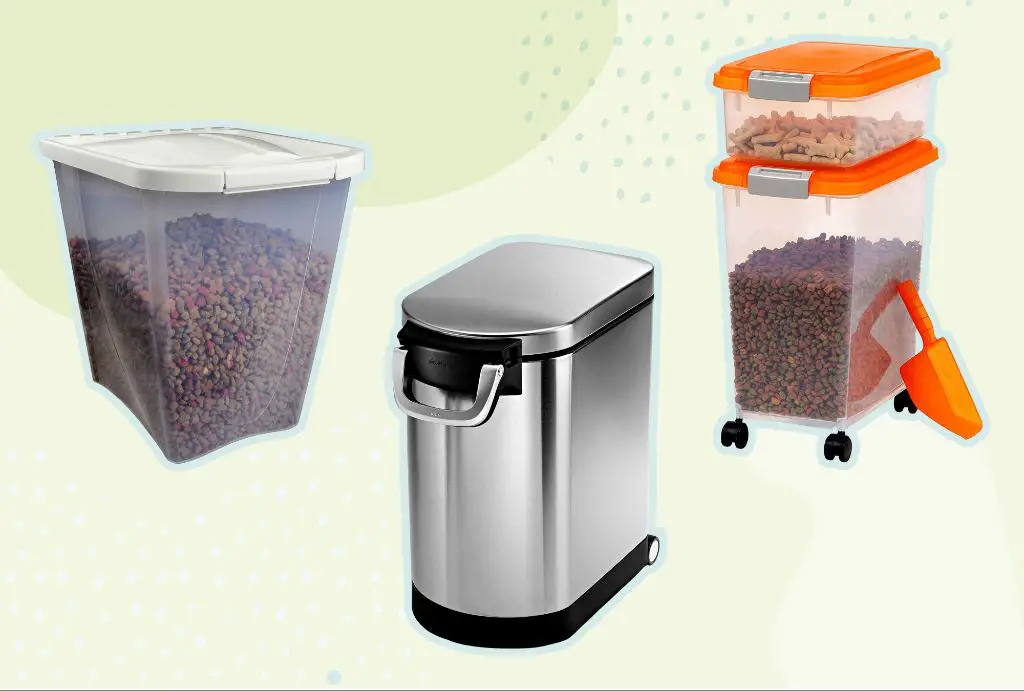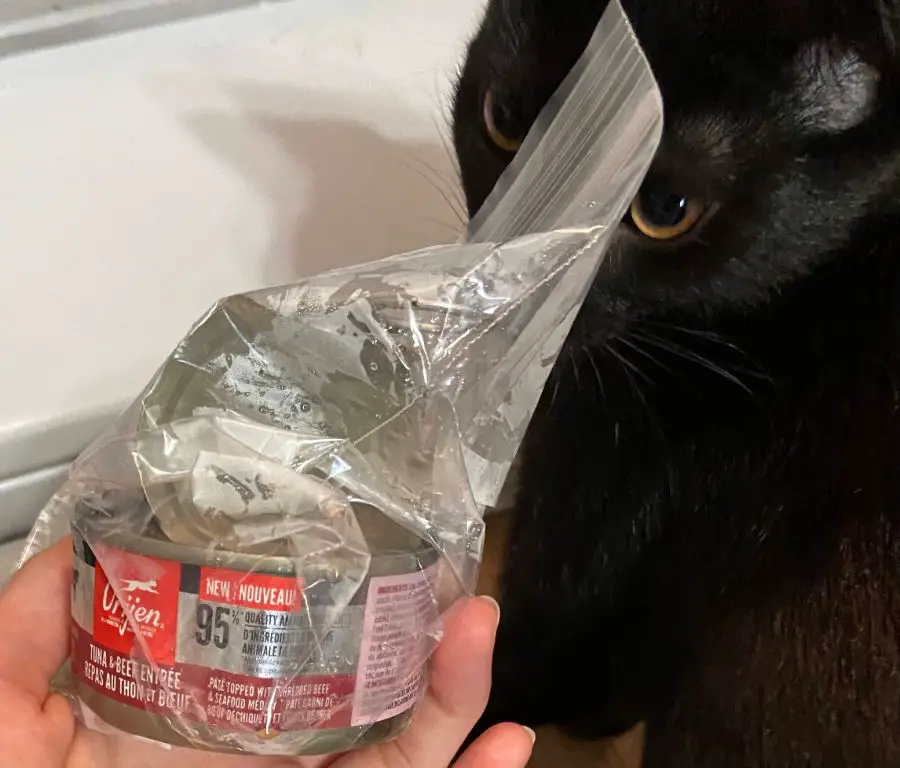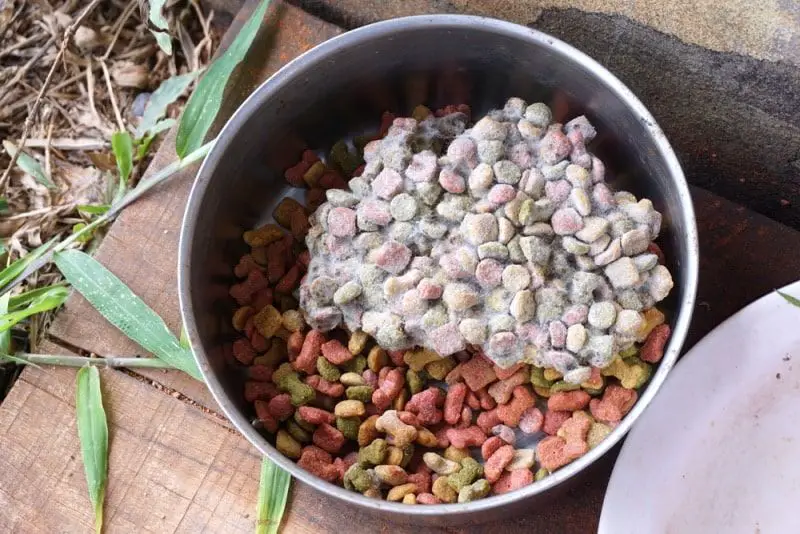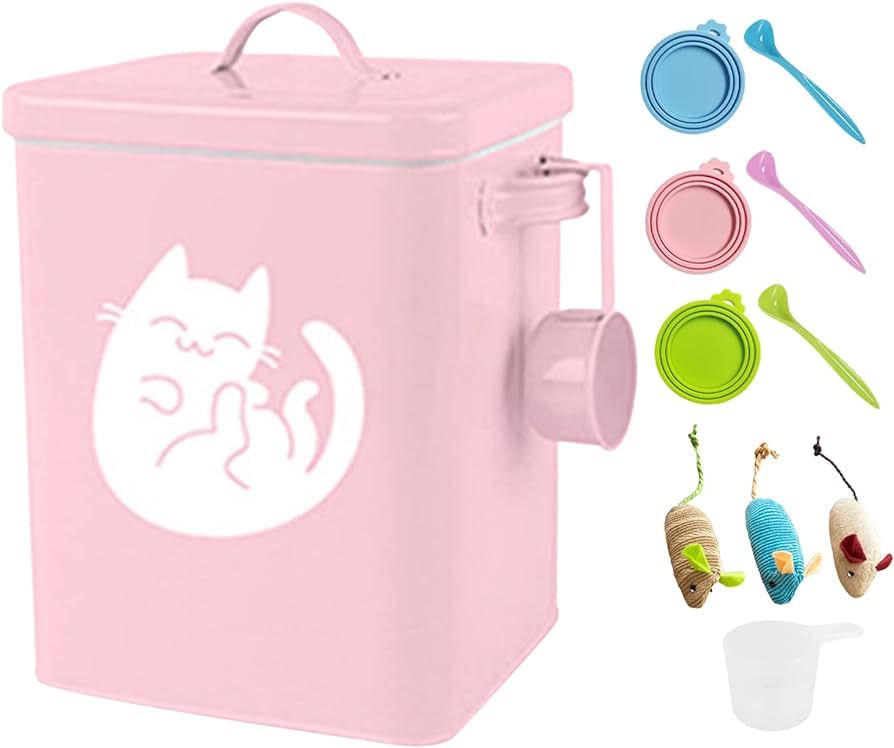This article will provide a comprehensive overview on proper storage of cat food. We’ll cover key considerations for storing both dry and canned cat food to maintain freshness and nutritional value. Proper cat food storage helps prevent spoilage and contamination, keeps food secure from pests, and makes it easy to identify expiration dates. After reading, cat owners will understand the optimal ways to store cat food at home.
Dry Cat Food
Dry cat food is designed to be shelf-stable and does not require refrigeration. It has a low moisture content, usually around 10%, which prevents bacteria growth (Source). The kibbles are made through a process called extrusion, where the ingredients are cooked under high heat and pressure. This kills any pathogens and creates a dry, hardy kibble. As long as the bag is securely sealed, dry food can be stored at room temperature for extended periods.
Many sources agree refrigeration is unnecessary for dry cat food. The key is keeping it in a cool, dry place in an airtight container if opened. It can maintain quality and freshness for several weeks at room temperature after opening. Refrigeration can actually cause dry food to lose palatability and degrade faster (Source). The exception is prescription or therapeutic diets, which may have shorter shelf lives. Always follow label instructions for storage.

Canned Cat Food
Canned or wet cat food has a much higher moisture content than dry food, usually around 75-85% water. This high moisture content means that wet food spoils very quickly at room temperature compared to dry kibble.
According to experts, opened cans of wet cat food should not be left out at room temperature for longer than 30 minutes. Bacteria grow rapidly in the moist environment of an opened can, so refrigeration is advised.
The USDA recommends refrigerating opened canned pet food and disposing of any unused portion after 5-7 days (Source). Sealing the can with plastic wrap or storing in an airtight container helps preserve freshness when refrigerating partial cans.
Proper refrigeration at 40°F or lower can significantly slow the spoilage process and maintain quality. Take care not to freeze wet food, as this alters the texture.
Refrigeration Overview
There are pros and cons to refrigerating both dry and wet cat food. Refrigeration can help preserve nutrients and freshness, but it also changes the palatability of some foods. According to veterinarians at The Hungry Puppy, refrigerating wet food can provide the following benefits:
- Preserves nutrients better than room temperature storage
- Maintains appealing texture longer
- Reduces bacteria growth that causes spoilage
- Allows owners to safely offer leftovers up to 5 days after opening

However, some cats dislike the taste and texture changes that come with chilled wet food. The food may need warming to become palatable again. Refrigerating dry kibble can help it stay fresh and avoid spoilage from humidity. But the kibble will become harder and cats may reject the food if they prefer a softer texture.
Storing Dry Food
Properly storing dry cat food is important to maintain freshness and prevent spoilage. The FDA recommends storing dry food in a cool, dry place with temperatures below 80°F (Source). Keeping cat food in an airtight container in the pantry is ideal, as this prevents moisture, pests, and odors from contaminating the food (Source).
Look for food storage containers made of stainless steel, glass, or food-grade plastic. Clear containers allow you to easily see when you’re running low. Make sure the container has an airtight seal to lock in freshness. Some containers have clamps or latches to keep air out.
Avoid storing dry food in the bags they come in, as these allow air transfer over time. Transferring to an airtight container blocks humidity, which can cause kibble to spoil faster. Only pour out what you need for a few days at a time, sealing the bag or container in between.
While refrigerating dry food is usually not necessary, some pet owners opt to store a portion in the refrigerator or freezer to further extend freshness. Keep food in the pantry for daily use, and freeze additional servings in airtight containers.
Storing Canned Food
Canned or wet cat food should always be refrigerated after opening. Keeping wet food refrigerated helps retain moisture, minimize exposure to air, and reduce bacteria growth (Source 1). Once opened, cans of wet cat food will usually last around 5-7 days when properly refrigerated and stored in an airtight container.
It’s important not to keep wet cat food unrefrigerated for more than 4 hours after opening, as harmful bacteria can grow rapidly at room temperature (Source 2). Any leftovers should be promptly refrigerated or discarded after your cat finishes eating.
For best quality and freshness, use refrigerated wet cat food within 5-7 days. Look for signs of spoilage like mold, unpleasant odors, or textural changes before feeding (Source 3). Freezing portions of wet food in an airtight container can extend its shelf life for a few months.
Signs of Spoiled Food
There are several clear signs that indicate your cat’s food has gone bad and should not be fed to your pet. The most obvious is if there are changes in the smell, texture, or appearance of either dry or wet cat food.
Canned cat food can develop an unpleasant or rancid odor, versus its usual aroma. The texture may become mushy, slimy, or excessively dry and crumbly. You may notice discoloration, such as graying, dullness, or unnatural colors. Mold or white film/spots can also indicate spoilage. According to Snappytom.com, if a can of food is dented, bulging, or leaking, it is safest to discard it.

Dry kibble can smell rancid or stale, versus its typical scent. It may exhibit signs of moisture, clumping,or mushiness. Discoloration such as graying or dullness can also be a red flag. Clumping of the kibble may indicate the food has absorbed humidity and started to spoil.
Ultimately, trust your senses – if something seems off with the look, smell, or texture of your cat’s food, do not take risks and discard it.
Food Safety
Proper food handling and storage is crucial to prevent contamination and foodborne illness in pets. Follow these tips from the FDA and CDC to keep pet food safe:
Wash hands with soap and water for at least 20 seconds before and after handling pet food. Sanitize any surfaces that come in contact with pet food. Store pet food in a cool, dry place in its original bag or an airtight container. Discard any bloated, rusty, or dented cans. Don’t use pet food past its expiration date or if there are signs of spoilage like mold, an off-odor, or poor consistency.
Keep wet and dry foods separated during storage and feeding. Never leave wet food out for more than an hour or so. Refrigerate promptly in airtight containers. Any leftovers or unused portions should be discarded. Clean food and water bowls regularly with hot soapy water.
Check the CDC and FDA websites regularly for any pet food recalls. Discontinue use of recalled products immediately. Report any suspected foodborne illness in pets to your veterinarian and the FDA. Follow proper handling instructions on pet food packaging.
For more information, see the FDA’s tips at [https://www.fda.gov/animal-veterinary/animal-health-literacy/tips-safe-handling-pet-food-and-treats] and CDC guidance at [https://www.cdc.gov/healthypets/keeping-pets-and-people-healthy/pet-food-safety.html].
Other Storage Tips
Besides keeping your cat’s food in a cool, dry place in an airtight container, there are some other tips that can help keep your cat’s food fresh for longer:
- Use proper food storage containers – Look for containers that are BPA-free and airtight. Stainless steel, glass, and food-grade plastic containers work well. Make sure the lid seals tightly. The OXO Good Grips Pop Container is an excellent airtight container for cat food storage according to https://www.tightvac.com/blogs/blog/8-tips-cat-dog-food-storage.
- Label containers – Put a label on your cat’s food containers with the date you opened the bag or can. This allows you to easily keep track of how old it is.
- Use oldest food first – When feeding your cat, be sure to use the oldest food first so it doesn’t have a chance to expire.
- Don’t mix new with old – When opening a new bag or can of cat food, don’t mix it with older food. This prevents the new food from going stale faster.
- Organize containers – Keeping your cat’s food storage containers organized and neatly stacked will make it easier to rotate stock and find expiration dates.

Following proper storage guidelines and tips will ensure your cat’s food stays fresh and nutritious for as long as possible.
Conclusion
In summary, proper storage of both dry and wet cat food is crucial to maintain freshness and nutritional value. Dry food should be kept in a cool, dry place in its original bag or an airtight container, away from sunlight and pests. Once opened, dry food lasts 4-6 weeks. Canned food must be refrigerated after opening and used within 5-7 days. Keep an eye out for signs of spoilage like mold, an unpleasant odor, or discoloration. With the right techniques, you can keep your cat’s food safe and nutritious. Proper storage helps retain vitamins, prevents rancidity, and reduces food waste. By following FDA guidelines and recommendations, cat owners can optimize their cat’s health through diet.
